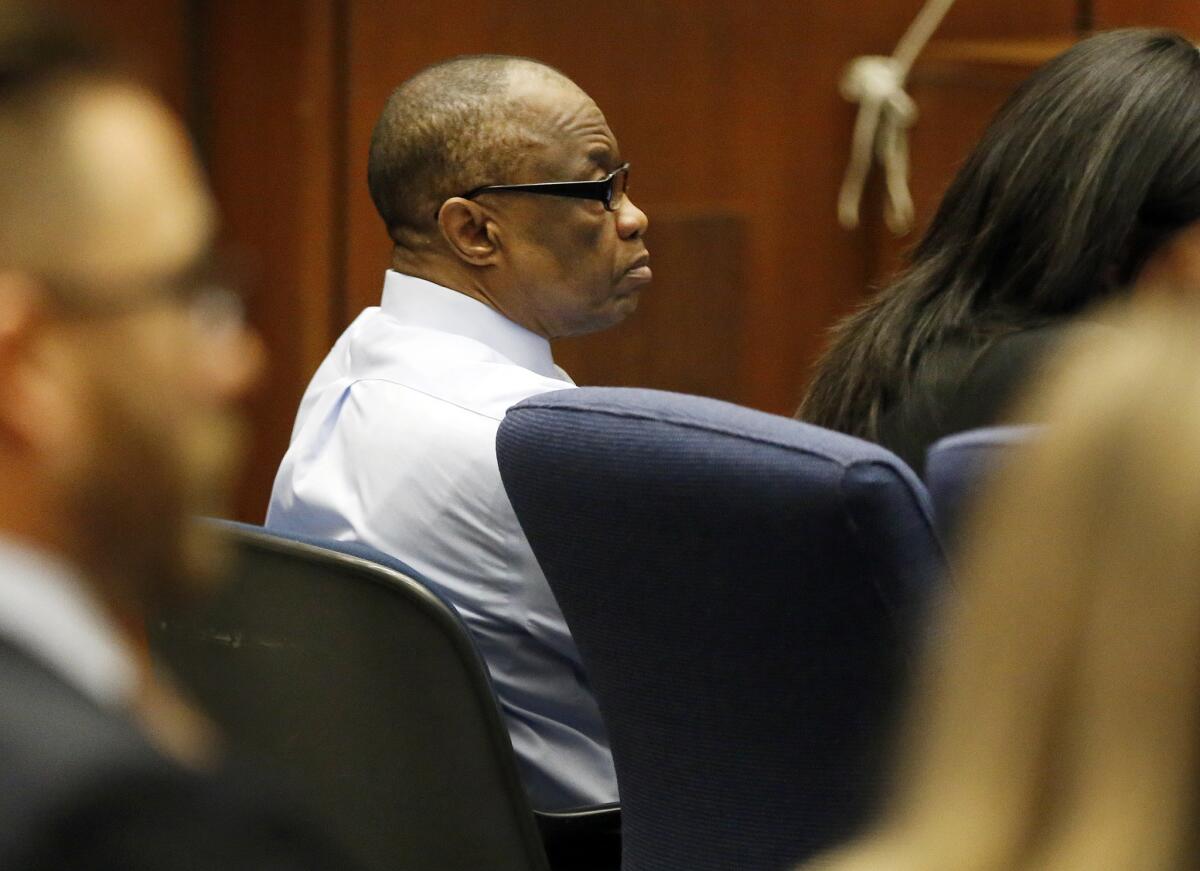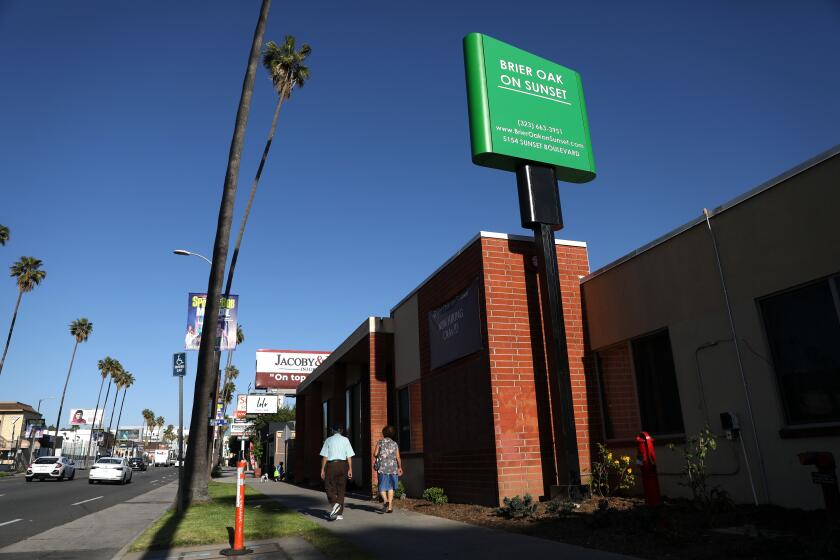Families identify ‘Grim Sleeper’ victims before prosecution rests

Lonnie Franklin Jr., shown in court in February, is charged with 10 counts of murder and one count of attempted murder.
- Share via
The photograph screened in a downtown Los Angeles courtroom revealed a gruesome image: the face of a woman with a long-sleeve white shirt stuffed down her throat.
Henrietta Wright’s nearly nude body was found under a mattress in a South Los Angeles alley in 1986. It would be more than 25 years before police found the man they believe killed her and at least nine other women.
On Wednesday, Rochell Johnson walked through the courtroom where for weeks she has attended the trial of Lonnie Franklin Jr., the man prosecutors allege is the so-called Grim Sleeper serial killer. Johnson took a seat on the witness stand and gazed up at the image on the wall.
“Do you recognize the person in this photo?” asked Deputy Dist. Atty. Beth Silverman.
“My mother,” she said without a flinch.
Johnson’s testimony concluded a procession of relatives who took the stand Wednesday to identify their loved ones, all believed to be victims of the Grim Sleeper.
Franklin, 63, is charged with 10 counts of murder in the deaths of nine women and a 15-year-old girl, and one count of attempted murder. He has pleaded not guilty.
Many relatives were asked to view grisly autopsy photos of the victims.
Porter Alexander Jr., who has attended nearly every day of the trial and pretrial hearings spanning years, was asked whether he knew Alicia Monique Alexander.
“That’s my … that’s my baby daughter,” he said.
After the identifications, the prosecution concluded its case, which relied heavily on DNA and ballistics evidence that prosecutors say connects Franklin to all the women.
Police began investigating Franklin in 2007 after the body of Janecia Peters was discovered in a garbage bag at the bottom of a dumpster.
DNA at the scene matched that from two earlier slayings, prompting investigators to begin matching the DNA with unsolved killings from the 1980s and more recent deaths in the early 2000s, according to previous testimony.
Investigators eventually found a partial match with Franklin’s son, whose DNA had been taken when he was arrested in 2008 and charged with firearm and drug offenses.
Investigators focused on the elder Franklin and launched a surveillance operation, which culminated in an undercover team retrieving a discarded slice of pizza and other items that would be used to match Franklin’s DNA to the killings, according to earlier testimony.
During a three-day search of his home that followed his arrest, investigators found a .25-caliber semiautomatic handgun, which two criminalists have testified was the gun used to shoot Janecia Peters, who is believed to be the Grim Sleeper’s final victim.
A criminalist also testified that bullets retrieved from the bodies of seven women — six of whom were killed and one of whom survived — were fired by a different .25-caliber handgun, not used in Peters’ death.
Franklin’s DNA, though, was found on at least two of those bodies, according to testimony.
Jurors also heard testimony from Enietra Washington, who is believed to be the lone survivor of the serial killer, who identified Franklin in court as the man who shot her in 1988.
Defense attorney Seymour Amster is scheduled to begin his case on Monday with an opening statement.
For more on the Grim Sleeper trial, follow @sjceasar
ALSO
Scientology leader’s father to publish ‘Ruthless’ memoir
Vigil marks Latasha Harlins’ death, which fed anger during King riots
Teen is accused of torturing and raping victim who was found bound in her home
More to Read
Sign up for Essential California
The most important California stories and recommendations in your inbox every morning.
You may occasionally receive promotional content from the Los Angeles Times.














